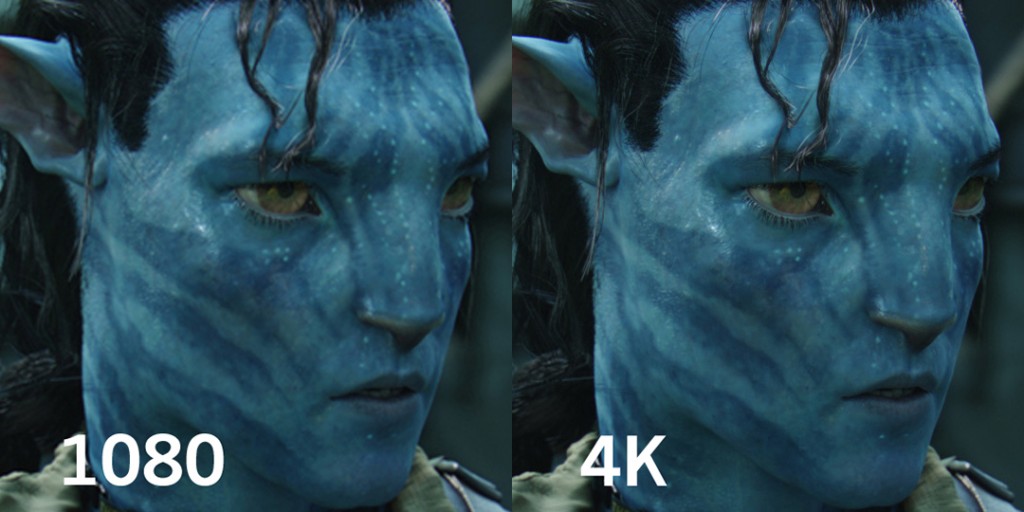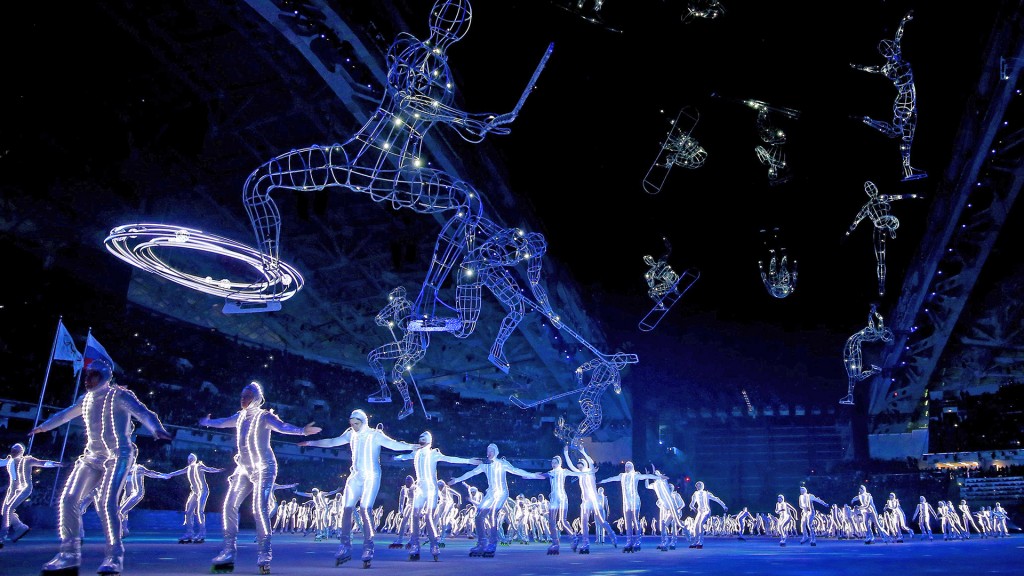With 4K/UltraHDTV vying for consumer adoption many are touting the new standard’s increased resolution as a way to make content even clearer. While increased clarity is certainly a boon no one seems to be talking about what could easily be a much more impactful difference, screen real estate.
Today most HD screens are overkill for where they’re used. To realize the full benefits of a shiny new 65” 4K TV you’d have to be sitting about four feet away from the screen. Even for a 1080p screen that size you’d need to be a paltry eight feet from it. (See chart at right) Once you get far enough away from any of these screens your eyes just can’t tell much of a difference.
Try scooting back a few feet from your monitor and see how much of a disparity you can discern between these two stills. (Click to view full size)

Up close there’s an easily distinguishable difference in detail, especially in fine areas such as hair. But once you put any appreciable distance between yourself and the screen it gets lost. Since most HDTVs are used in living rooms where the viewer is ten or more feet away the increase in resolution is less and less perceivable as you move from 720p to 1080p to 4K.
Where 4K can really shine is by leveraging all of that extra real estate to display double the content at the same resolution that we are accustomed to today. By using wider angle lenses we’re able to reveal more of the scene.Take the 2014 Sochi Olympics for instance.
What you saw in HD as this …

… could have looked like this.

Swapping lenses to change how the image is captured is something that cinematographers have been doing since the early days of movies as well as in modern television content. But without increasing the resolution you’re squeezing more information onto the same number of pixels.
 However, I don’t want to sell short the amazing quality that can be garnered from 4K cameras and lenses. Side-by-side comparisons of stills taken from 1080 and 4K footage are impressive, but seeing actual video is amazing. Dylan Lierz posted a great video on YouTube comparing shots taken in 1080p and 4K. Make sure you watch it full screen at 1080p quality.
However, I don’t want to sell short the amazing quality that can be garnered from 4K cameras and lenses. Side-by-side comparisons of stills taken from 1080 and 4K footage are impressive, but seeing actual video is amazing. Dylan Lierz posted a great video on YouTube comparing shots taken in 1080p and 4K. Make sure you watch it full screen at 1080p quality.
Since market saturation of 4K displays is still the vast minority one of the first benefits that the majority of consumers will see is what’s being referred to as Super 2K, 4K content scaled down to 1080p. Content creators will get all the benefits of 4K and consumers will get a crisper and higher contrast image, even though the image isn’t the native resolution of their screens. This is visible in Dylan’s comparison clip as YouTube doesn’t yet support delivery of the 4K resolution, so the 4K video is effectively Super 2K.

